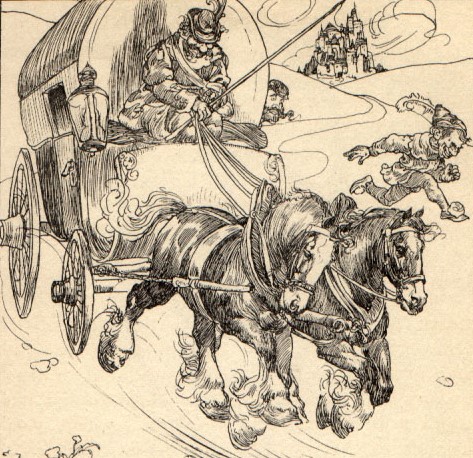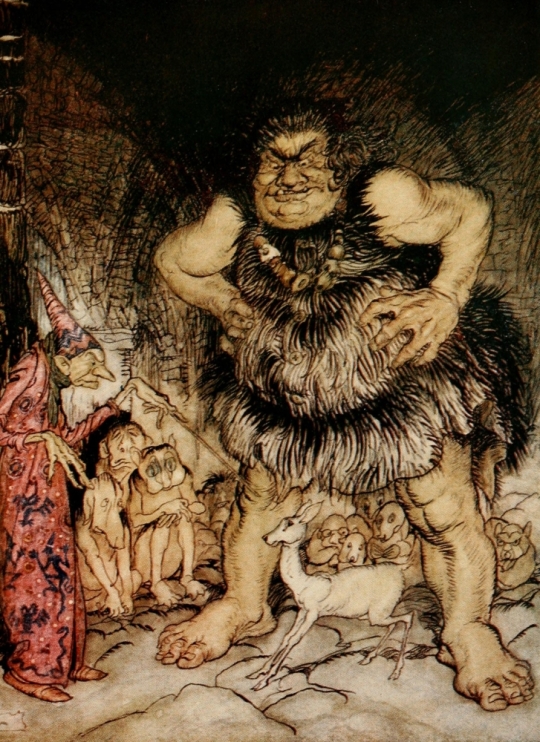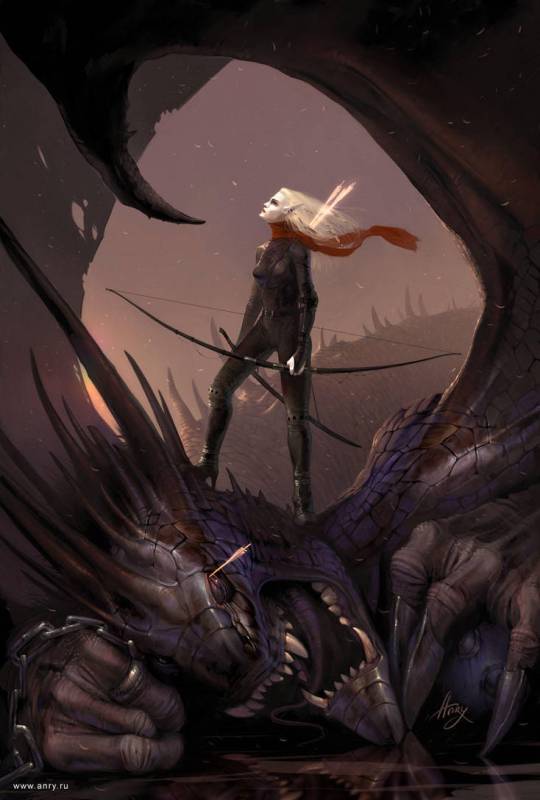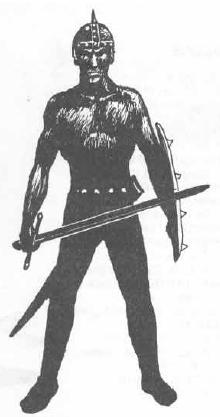KOBOLD – a race for Dungeons & Dragons 5th Edition
[This alternate kobold write-up is based on Germanic kobold folklore, not so much on previous iterations of D&D kobolds.]
Origins Both Fae and Domestic
Descended from capricious local fairy folk, kobolds are treated with wary suspicion by some and with deep respect by others. Small and cunning, they are nevertheless well-regarded for their dedication, workmanship, and for their loyal service – to those they deem worthy of it.
Survival of the Ficklest
Because of the Fae nature of their ancient forebears, kobolds have a wider range of appearance than any other race. Their features depend on both who their ancient ancestors lived among and the type of environment in which they lived. As a result, kobolds can resemble anything from a child or small elderly person to mammalian, reptilian, or even amphibious humanoids. Depending on their subrace, they can be fair-skinned or black as pitch, hairless or thickly furred, have rugged crocodilian hides, the smooth skin of aquatic mammals, or the scales of fish.
Regardless, all kobolds are very small, with adults ranging from two to three-and-a-half feet in height. Their nimble fingers – sometimes ending in claws – and agile frames aid them in many pursuits. They are extreme omnivores, able to subsist on anything their sharp teeth and determined jaws can chew.
Hard Workers, Harsh Masters
Kobolds take great pride in their work and judge the labors of others with scrutiny. They can be harsh critics and teachers, but will gush with pride over the accomplishments of their friends and family. They respect motivation in others, and vigorously encourage intrepid pursuits.
Fastidious by nature, kobolds keep themselves well-groomed and their possessions and abodes neatly organized. Between that and their penchant for crafting, they are usually well-outfitted for any endeavor if they have time to prepare.
They are short-lived compared to other races – unless they find a place to settle down, whereupon they might live on for hundreds of years. As a result, most kobolds are driven to find their calling in life, be it loyal service, family life, membership in a reputed organization, or developing sought-after craftsmanship or expertise.
An Eye For An Eye
Kobolds believe in repaying kindness with kindness, and insult with insult. They can become fiercely loyal to those they consider trustworthy, and bent on revenge against those who have treated them poorly. They are often impish, loving jests and a good-natured prank – or a cruel one if deserved. They do not like to be tricked themselves, however, and are prone to hold grudges against such behavior.
Kobold culture places a high value on efficiency, hard work, and single-minded industriousness. They are uncomfortable with idleness, despise sloth, and fear a lack of purpose. They can be creatures of habit, strictly adhering to duties, rituals, superstitions, and daily affairs.
The Quest for a Calling
Driven to discover their place in the world, many kobolds go adventuring to find a purpose: a cause to champion, a master to serve and learn from, or a group to belong and contribute to. They are restless until they find that role, and will consider any pursuit or course of action that might lead to new opportunities to find their calling.
Subraces
Their are three kobold subraces: the Hinzi, or house kobold; the Blekni, or mine kobold, and the Klavoti, or ship kobold.
Relations with other races
Kobolds may revere or even fear elves, for being greater fae than themselves, or may dislike or even despise them for what kobolds perceive as elves’ “holier than thou” attitude.
Except for the blekni subrace, kobolds find dwarves no more or less agreeable than other races. As miners and delvers themselves, the attitude of blekni toward dwarves can range from cooperation and camaraderie to jealousy, rivalry, animosity, and open hostility. Territorial disputes and allegations of wrong-doing can be all too common, and relations among dwarves and blekni can change as quickly as the weather and will make little sense to outsiders. In general, though, kobolds and dwarves respect each others’ handiwork and diligence, even if the work of kobolds often seems trivial to dwarves, and the labors of dwarves impractical to kobolds.
The unpredictable ingenuity and variety of humans sparks a keen interest in kobolds as they seek their own destinies. Humans often value hard work, simple lives, and close relations, which are also very attractive to kobolds looking to settle down. For their part, humans appreciate the devotion and craft of kobolds, and appreciate their magical abilities as well.
Kobolds feel a close affinity to the halfling love of hearth and home, and to their distant fae origins.
Kobold Names
The ancient ancestors of kobolds were local spirits in homes, mines, ships, trees, hills, and other locations. As a hold-over from those times, their names are usually a colloquial term, nickname, or place-name in a language spoken of their ancestors’ home. Aber, Balete, Bodkin, Feldi, Heppin, Lobb, Lodewin, Luffer, Nan, Scupp, Snoose, and Sond.
KOBOLD TRAITS. Your kobold character has a range of unique qualities.
Ability score increase. Your Dexterity score increases by 2.
Age. Kobolds reach maturity by the age of ten, and if they find a place to settle down they can live for hundreds of years.
Alignment. Kobolds can be of any alignment other than neutral.
Size. Kobolds stand between about 2 and 3 feet in height. Your size is Small.
Speed. Though quick on your feet, you are still quite small. Your base walking speed is 25 feet.
Wink of an Eye. Because of your diminutive size and fae nature, you may Hide as a bonus action and you have advantage with the (Dexterity) Stealth check made to do so. You may use this ability again after a long rest.
Nimbleness: You can move through the space of any creature that is of medium size or larger.
Night Tinker: Kobolds like to keep busy at night, and get their sleep during short ‘catnaps” throughout the day. Instead of sleeping, you slip into a trance-like state during which you can perform simple tasks and use skills or tools with which you are proficient. When in this state, you suffer no penalties to passive perception, but your movement is halved. After resting in this way for 8 hours, you gain the same benefit that a human does from 8 hours of sleep.
Languages. You can speak, read, and write Common and Kobold.
Subrace. There are three different types of kobolds to choose from.

(detail from “A little white feather danced above their heads” by Willy Pogany (1882-1955))
HINZI KOBOLD (aka House Kobold)
The Hinzi are descended from house kobolds, and so have a knack for domestic concerns. Their appearance can include features of mammals, children, and wizened old folk.
Ability score increase. Your Charisma score increases by 1.
Master of the House. You know one of the following cantrips: Dancing Lights, Light, Minor Illusion, Prestidigitation, Vicious Mockery. When you reach 3rd level, you may pick one of the following spells: Alarm, Bane, Bless, Purify Food and Drink, or Sleep. You can cast that spell once per day using this trait, and regain the ability to do so when you finish a long rest. When you reach 5th level, you may pick one of the following spells: Arcane Lock, Calm Emotions, Enhance Ability, Knock, or Gentle Repose. You can cast that spell once per day using this trait, and regain the ability to do so when you finish a long rest. Charisma is your spellcasting ability for all spells cast using this trait.
Tools. You gain proficiency with one of the following: brewer’s supplies, carpenter’s tools, cobbler’s tools, cook’s utensils, herbalism kit, leatherworker’s tools, potter’s tools, weaver’s tools.

(detail from a work by Olaus Magnus, 1555)
BLEKNI KOBOLD (aka Mine Kobold, aka Cave Kobold)
The Blekni are descended from mining kobolds, and so are quite at home underground. Their appearance can include features of reptiles, small mammals, and old wizened miners, but always with dark or even black skin.
Ability score increase. Your Constitution score increases by 1.
Darkvision. Accustomed to life underground, you have superior vision in dark and dim conditions. You can see in dim light within 60 feet of you as if it were bright light, and in darkness as if it were dim light. You can’t discern color in darkness, only shades of grey.
At Home Underground. You have proficiency with Intelligence (Nature) and Wisdom (Survival) checks involving caves, tunnels, stone, and ore. Also, you always know what direction you are headed and never get lost while underground or in similar environments.
Toxic Vein. You have advantage on saving throws against poison, and you have resistance against poison damage.
Light Sensitivity: You have disadvantage on attack rolls and on Wisdom (Perception) checks that rely on sight when you, the target of your attack, or whatever you are trying to perceive is in direct sunlight.
Master of the Mine. You know one of the following cantrips: Mage Hand, Minor Illusion, Prestidigitation, Vicious Mockery. When you reach 3rd level, you may pick one of the following spells: Alarm, Bane, Bless, Sleep, or Unseen Servant. You can cast this spell once per day using this trait, and regain the ability to do so when you finish a long rest. When you reach 5th level, you may pick one of the following spells: Find Traps, Knock, Levitate, Locate Object, or Silence. You can cast this spell once per day using this trait, and regain the ability to do so when you finish a long rest. Wisdom is your spellcasting ability for all spells cast using this trait.
Tools. You gain proficiency in one of the following: alchemist’s supplies, cartographer’s tools, cobbler’s tools, leatherworker’s tools, mason’s tools, potter’s tools, smith’s tools, tinker’s tools.
Languages. You can communicate through solid objects with other blekni kobolds via a code of taps or knocks.

(detail from an illustration in Book of The Sea, from Henk Verlagsanstalt and Printers, 1885)
KLAVOTI KOBOLD (aka Ship Kobold)
The Klavoti are descended from kobolds who inhabited boats, ships, and ocean-going vessels. Their appearance can include features of sea creatures, children, and wizened old sailors, usually with aquatic or wood-like complexions.
Ability score increase. Your Wisdom score increases by 1.
One With The Ship. You have proficiency with Intelligence (Nature) and Wisdom (Survival) checks involving seas, lakes, and rivers, and involving the materials used in boat- and ship-building.
Master of the Ship. You know one of the following cantrips: Dancing Lights, Druidcraft, Light, Mending, Prestidigitation, Vicious Mockery. When you reach 3rd level, you may pick one of the following spells: Bane, Bless, Goodberry, or Locate Object. You can cast this spell once per day using this trait, and regain the ability to do so when you finish a long rest. When you reach 5th level, you may pick one of the following spells: Arcane Lock, Enhance Ability, Knock, or Gust of Wind. You can cast this spell once per day using this trait, and regain the ability to do so when you finish a long rest. Wisdom is your spellcasting ability for all spells cast using this trait.
Tools. You gain proficiency in one of the following: calligrapher’s supplies, carpentry tools, cartographer’s tools, cook’s utensils, gaming set, navigator’s tools, water vehicles, woodcarver’s tools.
Share to your heart's content:








